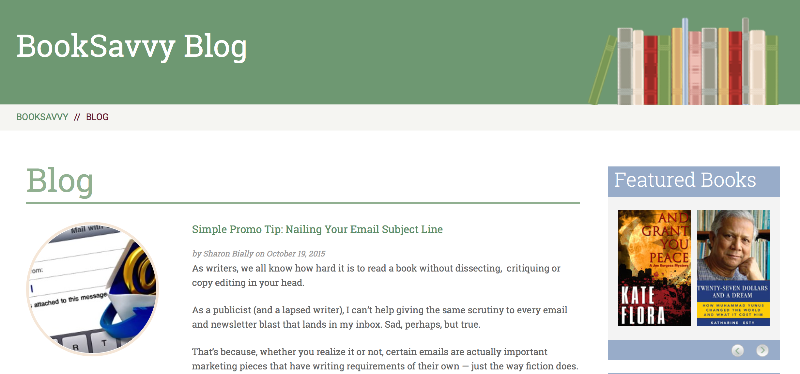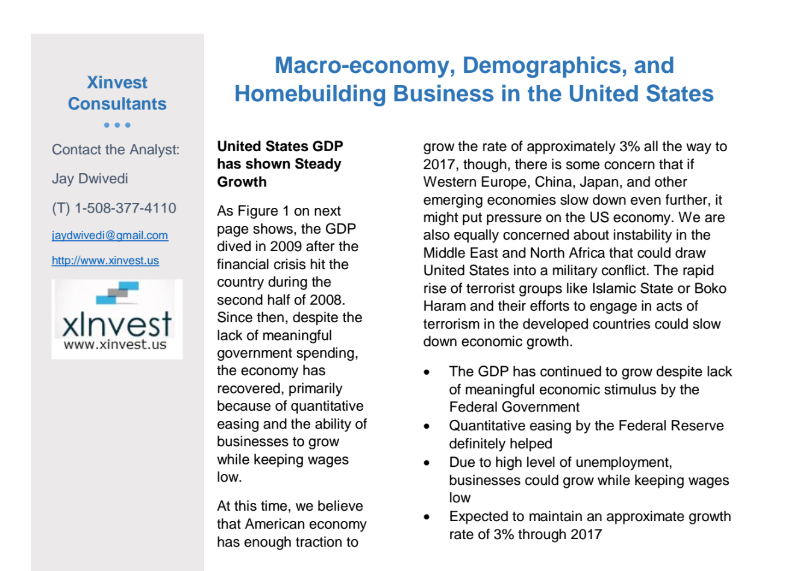Are you a small business trying to corner your market?
Locally, regionally, or online?
What does “corner your market” even mean?
Who knows?
Breaking down the definition of success is tricky.
So we decided to ask. For today’s post, we’re showcasing real-life examples of small businesses who are succeeding in large part due to their blogging techniques. They’re trying to corner their market… and their techniques are working.
From law firms to yoga instructors, blogging is often the least expensive answer to the biggest problem small businesses and agencies have:
How do I maximize my reach? How do I corner my market?
We asked and they answered. These small business owners are telling you exactly what kind of blogging they did to get ahead.
What it takes to get ahead — and stay ahead — of your competition can seem like a mystery.
But all of these businesses have one thing in common: while they may not be the biggest, baddest business in their market, they are thriving, successful, and profitable. All because of blogging.
If you don’t have (or want) a big marketing budget, this post is for you.
Here’s 8 examples of small businesses who have cornered their marketing by blogging.
1. Think Outside the Box
Sharon Bially founded BookSavvy PR in 2011. She attributes about 75% of her firm’s growth to her position as a contributing blogger to WriterUnboxed.
Say what?! She doesn’t even write for herself.
Nope, she writes on another blog.
It’s what she writes that matters. Thanks to WriterUnboxed’s search engine visibility and her own strategic choice of subjects to blog about (keywords, people), her posts about book PR come right up to the top of internet searches when authors are researching the topic.
The result? She has more incoming requests than she can handle and regularly turns business away.
BookSavvy PR is growing at about 40% per year since Sharon began the WriterUnboxed gig in 2013.
Her advice to other small business bloggers: rather than trying to grow your own blog from scratch, join an existing blog with an established audience or become a contributor to an online publication that talks about your field.
Smart talk, right there.
[Author’s note: I utilized a variation of Sharon’s technique to gain almost 1,000 email subscribers BEFORE I launched my latest blog. Writing for other sites works.]
Just make sure you:
- receive a link back to your site
- receive an author byline
- write for reputable sites
2. Party Like an Online Party Supplier
Sugarnest.com sells personalized party items and monogrammed gifts online. Founded in 2010, Karen Bullard recognized that she needed to engage with her customers.
She wanted to connect with her customer base, and not just email “buyers” with desperate buy now! followups.
Karen recognizes, and embraces, that buyers are people — not credit cards.
“Blogging is a great way to “talk” to my customers since I don’t have a brick and mortar store. It’s a way to build rapport and show how to use our products or to introduce new product lines.” – Karen Bullard
Blogging is an ideal way to communicate great images of products.
The challenge was how to better engage customers virtually.
So Robin curates examples. Posts that show how to plan a party or event and include Sugarnest products in the feature.
Blogging has helped to grow their Facebook and other social media followers.
Sugarnest.com found sales increased when the product was shown on the blog because the use was explained and demonstrated with photos.
Sales went up 60% the first year in blogging, and social media followers grew exponentially.
Karen’s best blogging practice: Talk in the first person. Like you’re having a face-to-face conversation. And always ask for feedback.
Party planning success!
3. If Your Client Has a Question, Long Tail It
The Longo Firm are Florida trial lawyers (don’t judge) who work with people needing personalized legal services either because they’ve been injured in an accident or had an employment issue.
Founded in 2012 by Micah Longo, the blog was started to grow business because blogging was, well… free.
Micah couldn’t compete against “the big boys” (aka big law firms). Larger firms spend upwards of $1,000,000 dollars a month (a million! a month!) in advertising.
Print, PPC, and billboards…they’re everywhere.
How does a new firm compete?
Longo identified long-tail keyword search terms as a way to get potential clients to know, like, trust, and ultimately hire the firm.
Michah breaks it down:
“Typically, the process goes something like this. First, a potential client has a problem, rather a question. With most questions, they turn to Google (or Bing whatever), for the answer. They type their question into the search box which is most likely more detailed then your typical 2-3 word search term.
For example, potential clients are more likely to search “Does my employer have to pay me during lunch time” – rather then just “employment lawyer.”
Then, the potential client finds The Longo Firm’s blog post titled “Does My Employer Have To Pay Me During Lunch?” They click on the post, like what they see, and explore the rest of the website/blog. They call the office and go from there.
So, if I’m using Google Keywords and I want the keyword “Car Accident Attorney” I’ll probably be paying close to $75 to $100 a click. With blogging and content marketing I get a very specific and narrow long-tail keyword which costs me very little – mostly time to write the 400 – 500 word article.” – Micah Longo
Micah stresses that blogging is a “marketing weapon that takes time to see a return.” Time and patience are required.
So is consistency.
The Longo Firm knows the blogging technique is working because of analytics. They have a specific phone number for the blog and website, along with using a CRM program to travel real-time ROI.
Micah’s best insight: just keep writing!
Picture a tree with roots. (Micah’s words, not mine.) The more roots the deeper and wider the tree. Small businesses need blogging.
Starting rooting around long tail keyword searches and see what you can find.
4. Give Your Site a Facelift (and a Funnel)
A Pacific Heights, San Francisco, CA, plastic surgery practice revitalized itself in 2012 after having no discernible digital footprint.
The old business had a website, but the practice was named after the departing doctor. When searching ‘plastic surgeon in San Francisco’, his organic listing would come up on page 6.
Not good.
Enter the new owner’s very smart move. Dr. Kaplan did not rename the practice based on his name, rather he gave it a location-based name, knowing it would improve SEO.
Then Dr. Kaplan started blogging 3x/week.
The results? The Pacific Heights Plastic Surgery blog ranks within the top 3 organic listings on the first page when searching ‘plastic surgeon in San Francisco’ and the #1 spot if searching ‘plastic surgeon in Pacific Heights’.
Way to go, doc!
3 themes are used as blog topic inspiration:
- current events related to cosmetic surgery (Jenners & Kardashians, anyone?)
- patient stories
- procedure-related topics
Now, here’s the smart part: at the end of the blog, he sends prospective customers into a click funnel using pricing as the incentive.
Why pricing? After reading about a procedure, everyone wants to know how much it costs.
The pricing page requires the consumer to submit a wishlist of procedures/services they’re interested in and once submitted, they receive an automated email with a breakdown of costs associated with those services.
Using his blog as a hook and pricing as a carrot, Pacific Heights Plastic Surgery has grown its email database from 200 addresses to over 4,100 in 2.5 years.
And business is thriving.
This is how you corner your market.
5. Unleash Your Inner Cougar!
Toyboy Warehouse is an online dating and relationship site for older women and younger men.
(Bear with me.)
While a little eccentric, they’re dedicated to providing a safe place for age-gap relationships to form as well as pushing the societal stigma.
This business was initially started in 2008 by “toyboy” dater Julia Macmillan. While Julia blogged using the site it didn’t become popular until it was taken over in 2013.
The new owners decided to keep blogging as Julia did, keeping her sassy style of writing. The difference? The blogging was optimized to promote the site.
The blog offered the perfect platform to push societal stigmas around age-gap relationships, in turn advertising the site to potential customers. Toyboy Warehouse could talk about their opinions, critique and praise societal changes and comment on how age-gap relationships are changing.
Why should we care? Because the company has achieved a 1500% revenue growth in 18 months, and the blog has contributed greatly to that by dramatically improving SEO, providing high-profile press opportunities, help in establishing helpful partnerships. Not to mention it’s won them a number of awards.
This is a small agency dedicated to their vision.
“We knew from the outset that the blog would be a driving force in turning the relationship site around. However, it wasn’t until we achieved major press because of the blog did we realize the impact it could have.” – Matthewde Noronha
SEO doesn’t stop at plain old blog posts, either. A study Toyboy Warehouse conducted into the relationships between women dating younger men and their position in business got picked up by a number of high-profile press outlets and helped them achieve Best Commercial Dating Blog at the Dating Awards 2015.
Talk about a good pickup line. 😉
6. Go Global (Without Meaning To)
Xinvest Consultants are management consulting firm helping companies find new growth opportunities by understanding markets, products, and technologies.
(No, I don’t understand what that means either. But their clients do, and that’s what matters.)
Started in 2003, Xinvest relied on networking and personal relationships to find new clients. Over the last 3 years, XInvest targeted blogging as a lead generator and went with it. Blogging allowed XInvest to showcase their skill and quality to a global audience. They don’t need to meet decision makers in person or send them slides or reports by email; they publish a blog post and potential clients find them.
Xinvest considers blogging a fairly low-cost method of new client acquisition, bringing international business beyond the Boston area.
Without a blog, they would have needed to spend a beaucoup bucks on travel to reach these clients.
Blogging took some time, according to Jay Dwivedi, President, but it’s working. Jay offers some great insights:
“…what works for a yoga studio is not going to work for a business consulting firm…be careful in picking blogging tips from others. For instance, as much buzz as there may be to promote your blog on Facebook, that is not what works for us. Our audience is senior level corporate executives and she or he is most likely not even a member of Facebook.”
What sets Invest apart from many of its competitors? Their readers appreciate real information synthesized in a report format so that they can digest the information, think through problems, and make better decisions.
Corner their market? Maybe. Succeeded where others have failed? Definitely.
Worth paying attention to? Absolutely.
7. Work Smarter, Not Harder
A Pilates instructor getting paid by the hour used blogging to build an online business that launched her into a 6-figure income.
Robin Long runs The Balanced Life, a website that provides online Pilates & barre workouts for busy women who can’t get to a gym or studio.
Pure genius.
The Balanced Life blog officially launched in 2011 because Robin recognized that her opportunity for growth and expansion were hindered by two things:
- being tied a location (every time I moved I had to start from scratch and build up a whole new client base)
- trading dollars for hours
When teaching full time, she was feeling maxed out, physically, emotionally and financially.
Over the past 4 years, she’s created an online business from a physical one. Her Pilates business provides a full-time income, supports her family, and freed her from feeling maxed out.
“5 years ago I felt like I hit a ceiling in my career, now I feel like the sky is the limit.” – Robin Long
Robin attributes her consistent blogging to establishing a connection with regular readers. The connection leads to trust, which leads to sales and paying clients.
“I knew blogging was working when I launched my first online program and had people signing up from all over the world.” – Robin Long
Robin is another one who stresses that blogging takes dedication and consistency to achieve growth.
(It’s like these successful people are on to something…)
8. Hire out
Clarke, Inc was originally founded as an offset printer way back in 1955. It would be an understatement to say things have changed a lot over the past 60 years. In order to survive the new marketing paradigm they had to evolve into more than ink-on-paper.
Clarke, Inc decided to become a marketing services provider. And not just in Lynchburg, Virginia.
Victor Clarke chose to embrace the online world in 2012 and committed to improving the website and driving traffic via blogging on their site bebetterdomore.com.
He quickly figured out he didn’t have time to sell and manage a small business, plus write weekly blogs. So he hired out.
Professional writers write blog posts using topics, outlines, and keywords developed during monthly one-hour brain storming sessions.
For Clarke, Inc., longer posts, with lots of graphics and hyperlinks, perform much better than shorter posts. 14 Creative Marketing Ideas That Cost You Nothing But Your Time is a great example of a successful long form post that achieved not only a high click through rate, but also a higher than average share rate.
“Dropping off a piece of helpful, useful content during a client visit is much better than asking how their weekend was. And sending a useful piece of content to a prospect sets us apart from our competition who only asks if the prospect has something they can quote on today.” – Victor Clarke
Take Victor’s advice. Don’t be “that” sales guy. You know, the one who only wants the sale.
People know.
Now get out there and corner your market.








